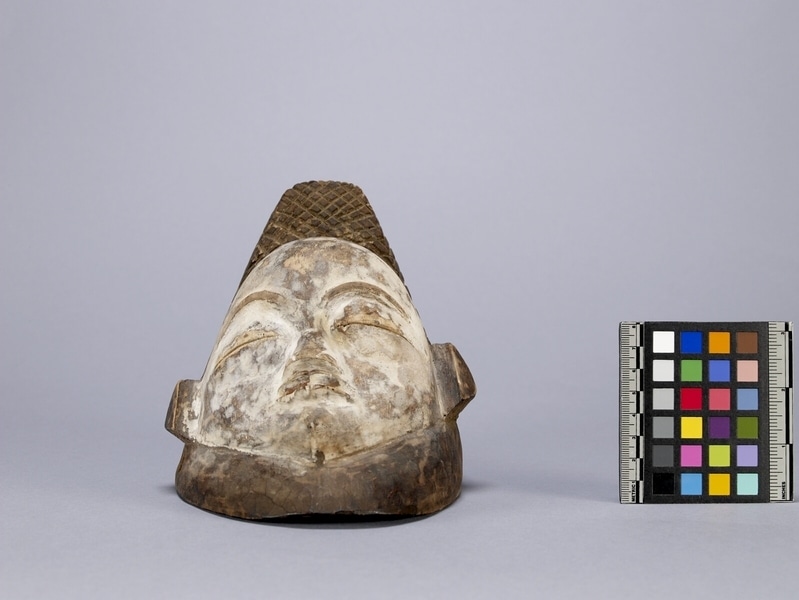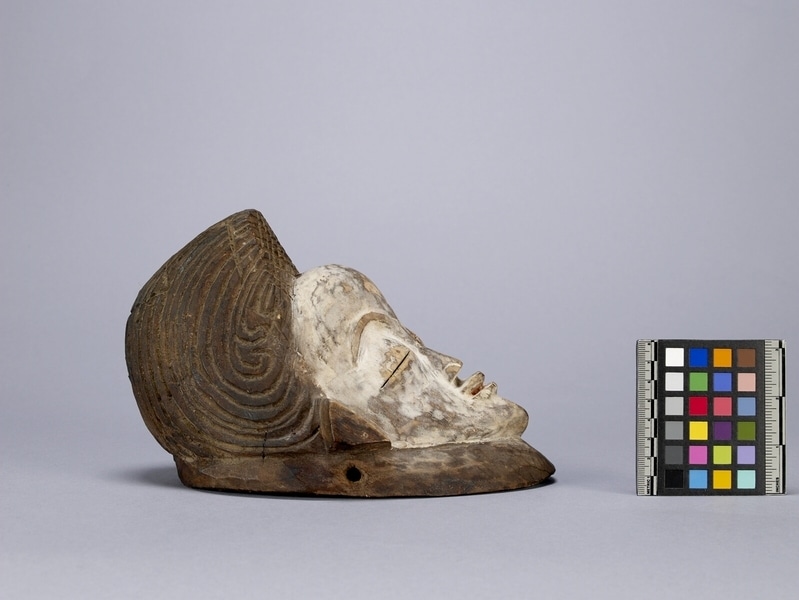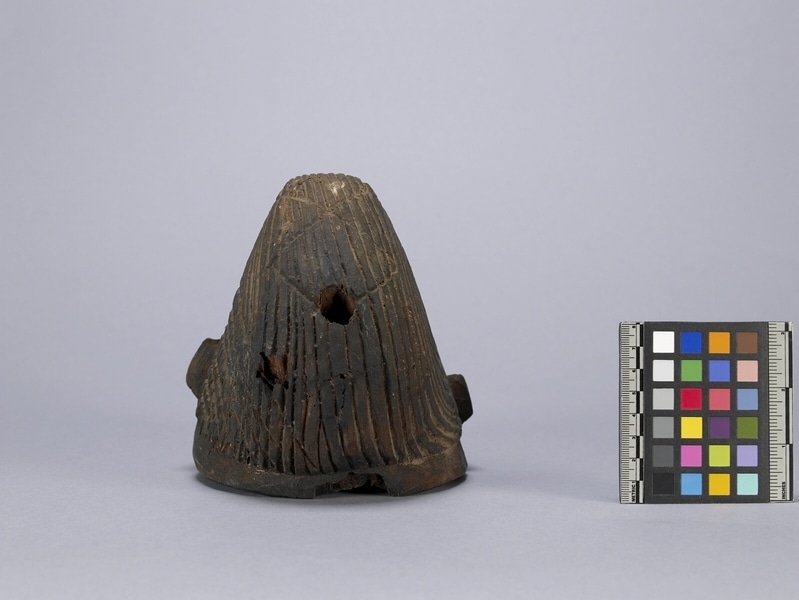Mask Item Number: 1373/8 from the MOA: University of British Columbia




Description
Oval-shaped mask with brown-coloured rim and hair. Hair protrudes upwards at an angle and is carved with grooves to simulate hair texture. Face is white, has arched eyebrows, closed eyes with thin slits, a small triangular nose, triangular ears, and protruding lips; chin comes to a tapered point.
History Of Use
Mukudj masks represent Punu ideals of beauty; they function as portraits of women renowned for their beauty in a given community. These ideals are symbolized by scarification motifs incised on the forehead and cheeks, elaborate coiffures, and fine facial features. During masquerades, mukudj dancers wear masks with woven raffia costumes (tsande-ngombu), and participate in acrobatic performances on three to three and a half metre tall stilts. Mukudj is essential in important community events, such as funeral ceremonies. In the late nineteenth century many masks were appropriated as souvenirs by explorers, missionaries, and colonial officials; second wave of collecting occurred in the 1920s and 1930s by art dealers and others working within the modern art movement. Today, mukudj masks operate as signs of ethnic identity for many contemporary Punu groups and are primarily produced for display in private domestic spaces. To meet this demand for decorative mukudj, Punu artists create a special variety of mukudj masks that are relatively inexpensive and less labour-intensive to manufacture. However, performance mukudj masks are still commissioned and produced.
Iconographic Meaning
The colour white is often associated with the realm of the dead and the supernatural.
Specific Techniques
White colour is produced by kaolin clay.
Item History
- Made in Gabon
- Owned by Helen Purkis before May 30, 1989
- Received from Helen Purkis (Donor) on May 30, 1989
What
- Name
- Mask
- Identification Number
- 1373/8
- Type of Item
- mask
- Material
- wood, synthetic fibre, paint and pigment
- Overall
- height 9.5 in, width 5.8 in, depth 5.6 in
Who
- Culture
- Punu
- Previous Owner
- Helen Purkis
- Received from
- Helen Purkis (Donor)
Where
- Holding Institution
- MOA: University of British Columbia
- Made in
- Gabon
When
- Ownership Date
- before May 30, 1989
- Acquisition Date
- on May 30, 1989
Other
- Condition
- good
- Accession Number
- 1373/0008